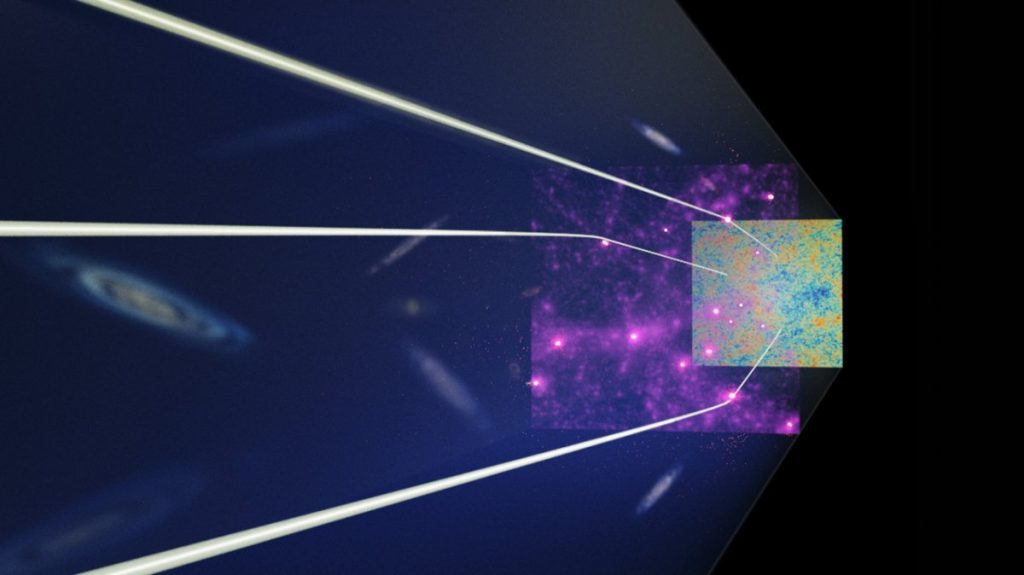Measurements of the distribution of dark matter in galaxies 12 billion years ago differ from the predictions of the Standard Model of cosmology. This was discovered by a Japanese research team, which was able to trace the origin and distribution of the mysterious dark matter much further back than was previously possible. Overall, their data set is based on approximately 1.5 million galaxies, which we see because they appeared only 1.7 billion years after the Big Bang. If their results can be confirmed, it could yield new insights into the nature of dark matter, says study leader and astrophysicist Hironao Miyatake of Nagoya University.
Especially difficult to search
Even looking at luminous things is difficult, The team explains. On the way to us, the light is shifted more and more into red and infrared, which is why it can be observed only with special observatories such as the new James Webb Space Telescope. However, analyzing dark matter in the early days of the universe is more difficult because special conditions must prevail. Because it does not glow itself, the effect of gravity is investigated. Studying the distribution of dark matter in such a distant galaxy would require light or radiation from objects behind it to be flexed by it. The further away things are, the more difficult this procedure will be.
In order not to get bogged down in the analysis of galaxies eight to ten billion years ago, as was the case with previous analyzes, Miyatake’s team now proceeded differently. So I started with a list of the 1.5 million galaxies we see 12 billion years ago that were gravitational lenses. However, their effects have not been examined on the light of galaxies that may be further afield, but on microwave radiation as measured by the ESA Planck night sky satellite. The cosmic microwave background radiation appeared shortly after the Big Bang and filled the entire universe. From how galaxies influence this radiation, the oldest data to date on the distribution of dark matter can now be obtained.
Measurements made of “clumping” in this early period of the universe now deviate from the so-called Lambda-CDM model, the standard model for describing the evolution of the universe since the Big Bang. The result is still uncertain, but if it turns out to be correct, then the whole model has weaknesses when going back in time. This is exciting, because the necessary improvements to the model could also help us better understand what dark matter is. Their nature is one of the greatest mysteries in physics. In addition, there is nothing to prevent the method from also being used to examine galaxies that we see in a very earlier state. search work Featured in Physical Review Letters.
(mo)

“Total coffee aficionado. Travel buff. Music ninja. Bacon nerd. Beeraholic.”







More Stories
Exploding Fireball: Find the meteorite fragments
Neuralink's competitor lets blind people see again with an implant
A huge meteorite has hit Earth – four times the size of Mount Everest